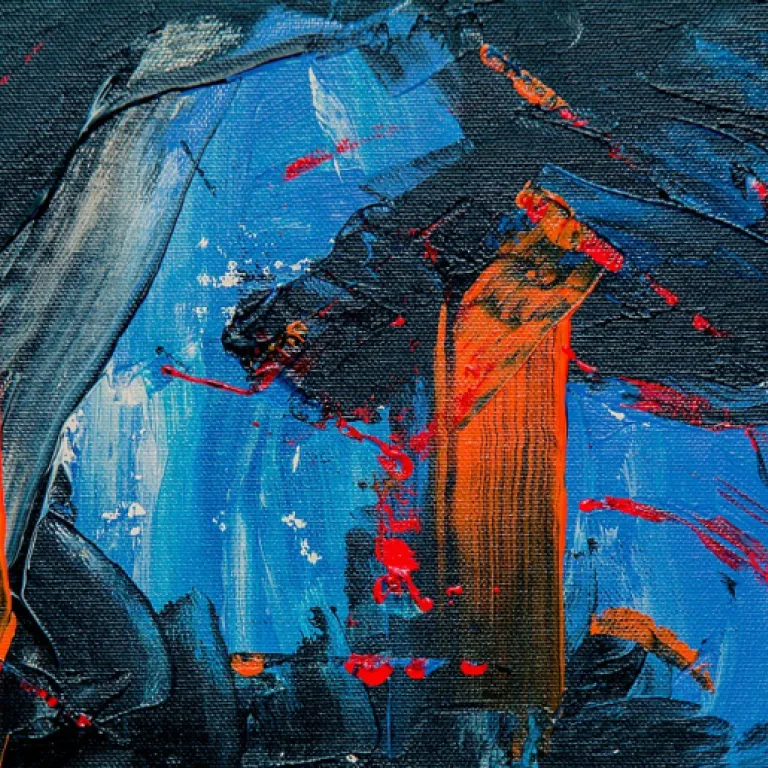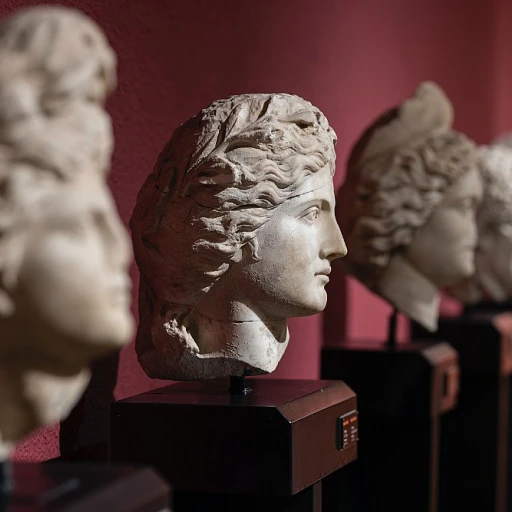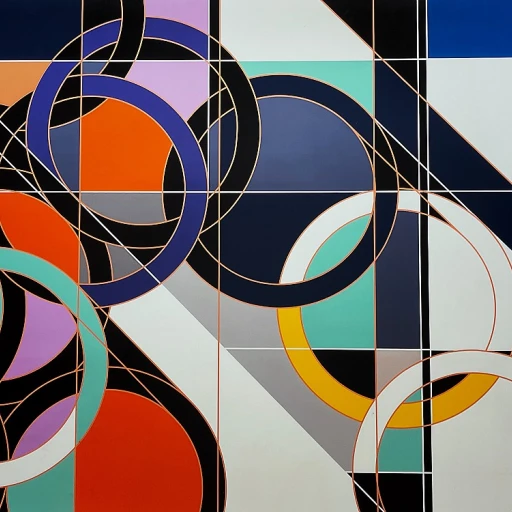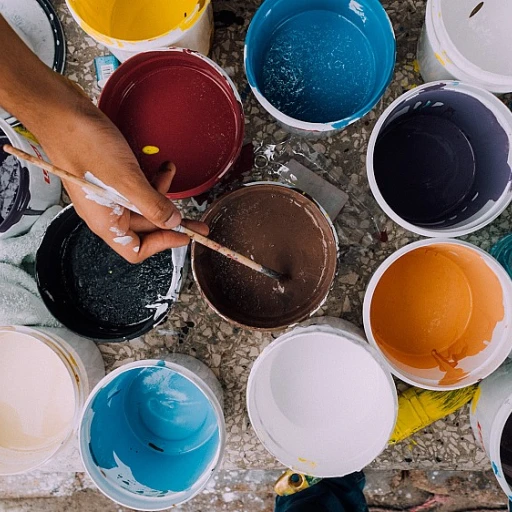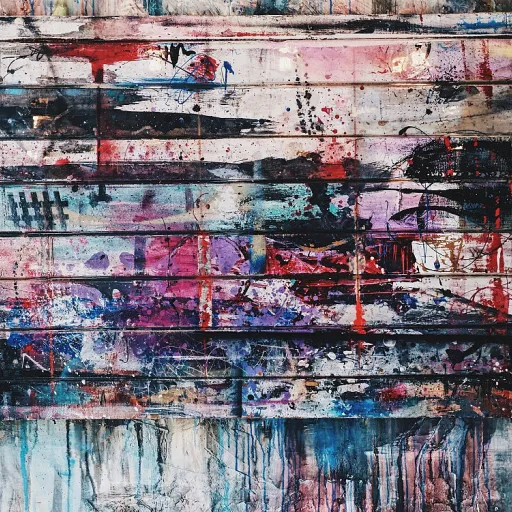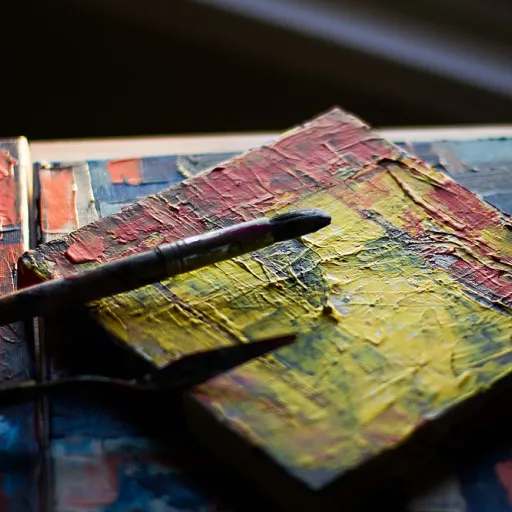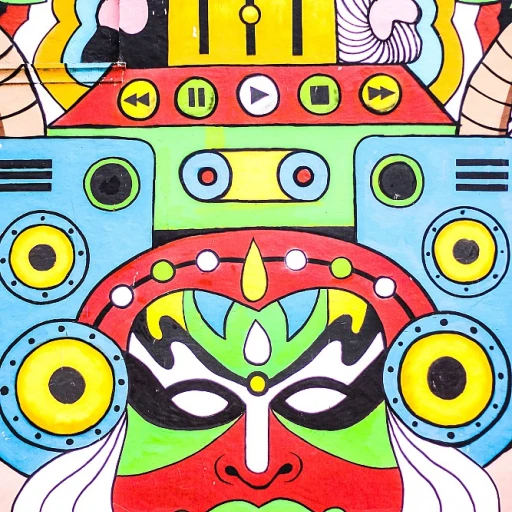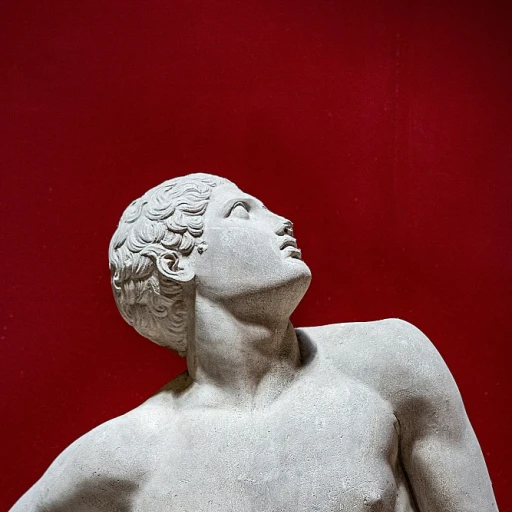-teaser.webp)
The Intersection of Art and Literature
The Fusion of Visual and Literary Arts
The intersection of art and literature is a fascinating realm where the visual and the written word converge, creating a unique tapestry of cultural expression. Paintings featuring books are a testament to this fusion, offering a glimpse into the profound relationship between these two forms of art. The depiction of books in paintings is not merely an aesthetic choice; it reflects a deeper narrative, inviting viewers to explore the stories within the pages and the context of the artwork itself.
Throughout history, artists have been captivated by the allure of books, often using them as central elements in their compositions. From the trompe l'oeil techniques of the nineteenth century to the vibrant oil panel works of modern times, books have served as symbols of knowledge, power, and introspection. The history of art is replete with examples where books play a pivotal role, offering insights into the cultural and intellectual milieu of the time.
In the realm of luxury artwork, paintings featuring books are highly coveted for their ability to evoke a sense of sophistication and intellectual curiosity. These works often grace the walls of art museums and private collections, where they are admired for their intricate details and the stories they tell. Whether it's a van Gogh masterpiece or a lesser-known gem, the presence of books in art adds a layer of depth and intrigue that captivates collectors and art lovers alike.
As we delve deeper into this topic, we will explore iconic paintings that feature books, uncover the symbolism and meaning behind these works, and discuss the role of books in luxury artwork. This journey will also touch upon the nuances of collecting and preserving literary-themed art, offering insights into how these pieces can enhance a collection and add a touch of elegance to any space.
Iconic Paintings Featuring Books
Notable Visual Narratives with Books
The combination of art and books in paintings offers a compelling medium for artists to convey deep narratives and intricate symbolism. Museum art, with its rich collection of paintings featuring books, presents a tapestry where literature and visual art intersect beautifully. The art museum-like setting showcases how book-themed paintings have captivated collectors and enthusiasts alike. This fascination is evident through iconic works that have transcended time, capturing diverse audiences. For a deeper dive into this intricate world, one can explore the masterpiece of "Van Gogh's Church at Auvers" here. Such masterful incorporation of books into art adds an additional layer to these paintings, creating unique and thought-provoking compositions. A notable example of this intersection is the nineteenth century's remarkable shift in art trends. Paintings from this era, such as those by the renowned portrait artist celebrated for their mastery of oil panels, often include book covers or books as a central element. The intricate detail of book cover designs is not only charming but intricately combines with the broader visual context, often acting as a window into the characters' intellect or worldview provided within the painting. Furthermore, renowned institutions like the Metropolitan Museum and other significant collections have exhibited such works, reflecting the lasting appeal of literary-themed artworks. Pieces that include a book often provide a short description or visual cue that deepens the viewer's understanding of the portrayed subject, much like the celestial eyes rendered beautifully by cugat in his paintings. In essence, iconic paintings featuring books are more than just a harmonious fusion of two art forms; they are portals that artfully blend the literary with the visual, creating timeless stories that continue to inspire and provoke deep reflection upon our continued engagement with both mediums. These works invite viewers to not only appreciate the aesthetic but also engage in a dialogue between history and art, enriching the luxury collection of any art enthusiast.Symbolism and Meaning
Unlocking the Layers: Symbolism and Meaning in Literary Artworks
Luxury artwork, especially paintings with books as focal points, often serve as silent storytellers. They are not merely aesthetic depictions but a thoughtful confluence of art and literature offering layers of symbolism and meaning. These iconic depictions transport the observer into a narrative entwined with history and personal reflections. In the vibrant tapestry of art, the table book cover has often been a subject of profound intrigue. The original intention of adding books to paintings is frequently to imply wisdom, intellect, or contemplation, yet the interpretation can expand beyond this. The book is more than an object; it is a bridge to the mind of the artist and the narrative they wish to convey. Consider pieces where a book lays open on a table with pages that invite the viewer's eyes to journey through the story they may tell. This tangible connection can be observed in the surreal yet engaging genre of Trompe L'oeil in worlds where illusions play a significant role. Here, a painting may include books as a mingling of reality and illusionary art – compelling the viewer to distinguish between life and illustration. Museum art involving books often illuminates the societal statuses or the wisdom of the era portrayed. In the collection housed at the Metropolitan Museum, works elaborately embrace books to evoke centuries-old attention to literacy and knowledge. Works by celebrated artists before the nineteenth century artfully combine with literature and the era's intellectual aspirations. A canvas echoed with the whispers of stories can take inspiration from Berthe Morisot. Her works often contain mesmerizing details, such as the celestial eyes inviting the viewer to delve beyond the physical into the contemplative. As seen in top posts about Van Gogh’s works, symbolism stands at the heart of understanding the deeper context of art pieces featuring books. Further exploration of curated collections combined with the distinctive style of portrait art reveals how books transform a simple painting into a statement on the passage of knowledge and the continuity of stories through time. Collectors aiming to amass artworks should be attuned to these subtle yet powerful cues within the composition to fully appreciate the depth such pieces of art offer. For deeper insights into how this connection between literature and art enriches luxury artworks, take a closer look at the enchantment of Cinderella in luxury art, where stories seamlessly merge into the canvas, creating a timeless allure.The Role of Books in Luxury Artwork
The Timeless Connection of Books in Luxury Art Creations
The world of luxury artwork often finds its muse in the printed word. Books and art merge seamlessly to create visual feasts that capture the imagination and elevate the soul. In the realm of luxury paintings, books serve not just as backdrops or props, but as integral components that enhance the storytelling within the frame. The presence of books in art pieces adds layers of meaning, transporting viewers into the dimension of intellectual pursuit and contemplation. An oil panel painting may showcase an open book on a designer table, each brushstroke aiming to convey the intimacy and solitude found in the world of reading. With its combination of rich colors and textures, the artwork invites viewers to ponder the intersecting narratives of art and literature. Consider the trompe l'oeil style—here, the illusion of books on shelves or tables creates a captivating interaction, inviting viewers to step closer and appreciate the thoughtful details. Such paintings do more than decorate walls; they reflect life's complexity and our enduring bond with the written word. Luxury artworks featuring books also nod to history art, drawing inspiration from the nineteenth century, when artists like Berthe Morisot intertwined literary elements with visual art. Morisot's contributions to this genre illustrate how the book can function as both a symbol of knowledge and a tool for exploring life's narratives. Moreover, portraits incorporating books add focus and sophistication. The inclusion of a book in a portrait can reveal the subject's personality, hinting at their interests or aspirations. For art collectors, these paintings hold particular allure due to their ability to capture the essence of a person or an era. At art museums such as the Metropolitan Museum (Met), visitors can view how books contribute to the narrative depth and intellectual weight of museum art. The blend of artistic mastery and literary themes continues to mesmerize audiences, ensuring that such works maintain their status in renowned collections.Collecting Paintings with Literary Themes
Acquiring and Curating Literary Artworks
For collectors looking to enrich their art collection with paintings that depict books, the allure of combining art with literature offers a unique opportunity to create a vibrant dialogue between two timeless worlds. Literary art pieces are more than just paintings; they're a gateway to an enriching cultural and intellectual exploration. When seeking out such paintings, it's crucial to identify authentic and original pieces created by renowned artists. These artworks often utilize a variety of styles, from Van Gogh's expressive brushstrokes to trompe l'oeil techniques that blend realism with illusion. Museums, such as the Metropolitan Museum, often showcase such works, offering an insight into the history of art and the symbolic impact of books in art. Consider focusing on acquiring paintings that embody compelling narratives. Look for pieces where books are depicted with a sense of purpose, whether under a window providing a view into the artist’s world or as part of a portrait that adds layers to the subject's character. Art depicting book covers, like the iconic celestial eyes on The Great Gatsby, can also provide a fascinating look at the intersection of book design and art. When collecting, think about the themes you wish to explore:- Nineteenth-century settings that capture the essence of an era.
- Berthe Morisot works that bring a delicate touch to literary scenes.
- Oil panel creations that combine detailed craftsmanship with thematic depth.
Preserving and Showcasing Literary Art
Conserving Artistic Literary Works
Paintings featuring books are a captivating blend of art and literature. However, these masterpieces require proper preservation to maintain their elegance and meaning over time. The process extends beyond simple cleaning; it involves specialized techniques to ensure each detailed brushstroke remains vibrant and intact. To preserve book-themed paintings, it is crucial to consider the conditions in which they are displayed and stored. Here are a few practical steps art collectors and connoisseurs can employ:- Control Light Exposure: Limit exposure to direct sunlight and intense artificial lighting. The ultraviolet rays can cause the book covers and colors of the paintings to fade, altering the original atmosphere crafted by the artist.
- Regulate Temperature and Humidity: Fluctuations can damage oil panels and canvas, causing the surface to crack. Aim for a stable climate akin to conditions in top museums like the Metropolitan Museum of Art.
- Utilize Proper Framing: Ensure the use of archival-quality materials for framing. Protective glazing can offer an additional layer of security, guarding against dust and potential impact.

